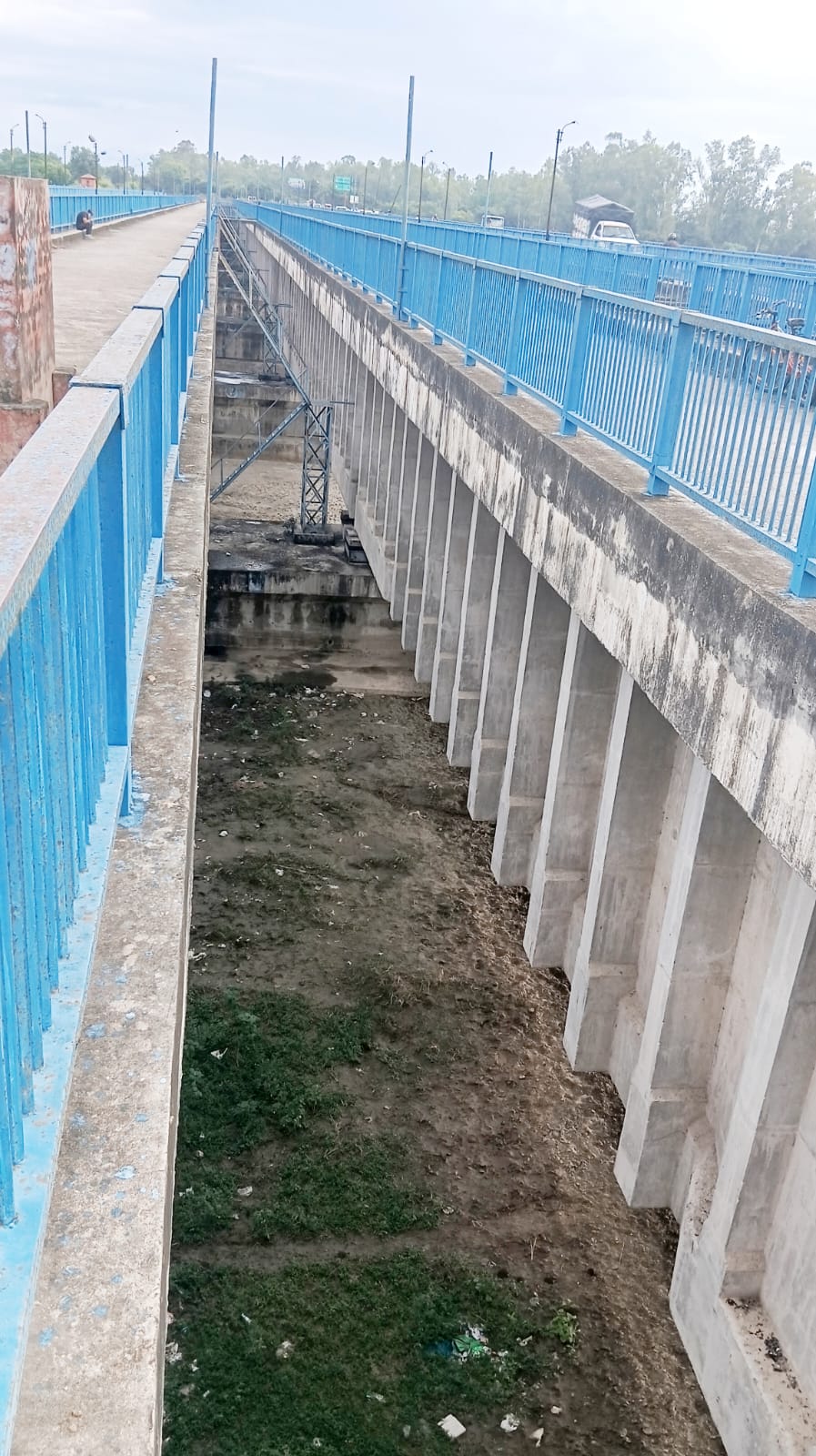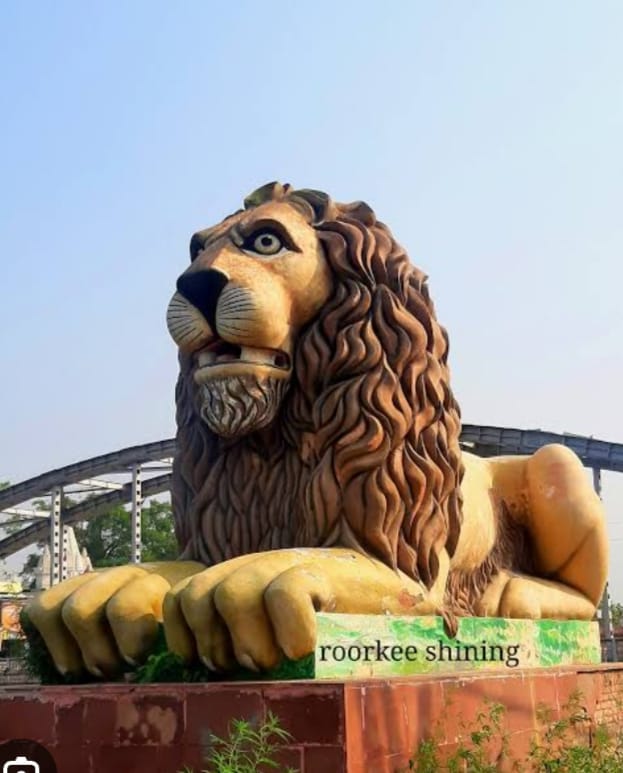By
Kaushal Kishore
Materials Engineer, Roorkee
The new Solani aqueduct on Ganges canal Roorkee was built with prestressed concrete which allows for longer spans and a simple more robust design compared to old bricks, lime- surkhi mortar masonry arches of the old aqueduct, in which 8.5 crores bricks were used, while iron railing used in the sides of two lanes were imported from England. This is interesting to note that materials bringing those days on ship from England to Indian ports take 6-10 weeks via the Suez canal or 3 to 6 months via the longer Cape of Good Hope. Calculate in it also time taken on road from Indian ports to Roorkee.
After retirement from University of now IIT Roorkee I joined M/S Roffe Construction Chemicals Pvt.Ltdd, Mumbai as it’s Chief Concrete Technologists afterwards I became it’s one of the Director.

AQUEDUCT picture taken on 7/10/2025
For the contractor of above aqueduct I designed M-40 grade of concrete with Roffe superpladticizer. Those interested may read my paper by visiting Google site and log in; Civil engineering portal The Ganges canal by Kaushal Kishore.
I had designed numerous concrete mix design almost all cements of India in this I find Utra Tech cement as one of best cement OPC and PPC both With Ultratech cement I had designed numerous concrete mixes from ordinary strength to M-80 grade concrete, self compacting concrete, shot crete concrete, fibre reinforced concrete, fly ash concrete and more There is life after retirement and after retirement I worked for 30 year’s which includes in free time working in home research and testing laboratory and numerous construction sites visits almost all India and outside India. At my age of 92 years I still work for 12 hours daily.
I had never worked for money. In spite of doing so gigantic work what to say about car I even do not have 2 wheeler not any of my house not a single inch of land in this world only pension from IIT Roorkee and few clothes

























Hello. I want to find out these from you. What is quasi-displacement, and quasi-displacement control technique? Also, when we say finite element modelling of reinforced concrete beam, what does it mean?
hi am doing B.tech in civil engineering from IIT bombay . i have a deep interest in this branch i want to do masters in structural design. please tell me reputed collages for doing masters in structure design. and also what is a starting salary of structural engineer after just paasing out collage ? thanks …..& this website is great.
hello i am a student of b.tech 2 year nd my branch is civil engineering.i am very interested student in this branch.i want to a good civil engineer nd we will do work very carefully nd honestly as a perfect engineer..thanks..i take knowledge for this web.
1.How prevant shrinkage cracks in roof ?
2. How to prevant cracks in lower portion of beams?
3. How to prevant cracks at the portion between roof and brickworks?
4. How to prevant efflorecence of brickwork?
The tonnage from two vertical shafts each to be sunk to a depth of 2 000 metres is to be dumped
on a square piece of ground, measuring 160 m x 160 m, in the form of a cone with a circular base.
The one shaft is rectangular with dimensions of 11 m x 3 m and the other a 7 m diameter circular
shaft. Both the ground and the top of the dump are to be accepted as level. If the ratio of “in-situ”
to broken rock is 12: 20 and the angle of repose for rock is 380, calculate:
i. The height of the dump,
ii. The top are of the dump,
iii. Determine the height of the dump if 20 000 tons are sold to the crushers
iv. (“in- situ” density 2, 73 tons/m3).
hi this site is very effictive ful for knowlage of civil engg. sector
What is the water cement(w/c) ratio for concrete??
check IS CODE 456
Normally 0.45 w/c ration get used for concreting.
But under-water (IS 456-2000)
14.2.2 Under-water concrete should have a slump
recommended in 7.1. The water-cement ratio shall not
exceed 0.6 and may need to be smaller, depending on
the grade of concrete or the type of chemical attack.
For aggregates of 40 mm maximum particle size, the
cement content shall be at least 350 kg/m3 of concrete.
hey i got the question, what is the methodolgy of Healty House in civil engineering ????
i am a civil engineer by professional an have be on the job for more than 10yrs but wish to specialize in structural design any good s.designer can help me. Ever ready to learn and work with the person.i am from Ghana Knust currently working in Rwanda-Kigali as project manager.
i want a more building managment software names? please say anybody…
Dear sir before i use your website,for the find the weight calculater ,sir i am draftman iso am am working civil and mecanical both ,sir now i have a problem in macanical i need the interpenetration corvers of solid , cylinderical ,or what you have sir development in mecanical please send to or any addess thankyou somuch
BestRegard.
Md.monazir
Looking at driven pile with a follower. What can be the effect of a cone shaped follower on the transfered energy?
if the flakiness and elongation index of the aggregates is above 25% what is the effect of this on concrete and what are the values ?
Hi i m the student of civil engineering at iit delhi .Civil engineering is the mother of all enggineering department.civil engineering switch of all department…
Well the water cement ratio depends on the grade of concrete you want to design? The mix design is based on the target strenght in the laboratory and correspondingly the value of w/c ration can be obtained from the curves given in the IS code 10262 2009. I advise you to read this code. However as a thumb rule M20 grade is 1:1.5:3 and w/c ratio of 0.45 may work
There are many ways to reduce shrinkage cracks in roof
1. Reduce water content in concrete by restricting the water just to obtain desire workability. you may use water reducing admixtures
2. Concrete should be properly cured either by spraying curing compounds and keeping concrete wet or by covering the surface
3. cement rich or highly wet mixes should not be used
4. excessive working at the top surfce should be avoided as this will bring cement paste on the top and coarse aggregates will be depressed.
Mr. Pawan pandey is asking for w/c ratio in concrete? I understand if some body is posting this question he may be informed about the how this is arrived at in mix design!!
is microsoft excel essential for a civil engineer?
Sir i got 75 percentage in diploma in civil engg. Will i get this much percentage in engineering.
it is really inovating.
it has sharpen my passsion to
be a civil engg……